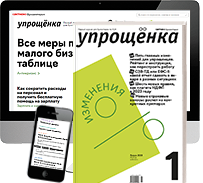
File size: 13.6 MB
NL5 is the Non-Linear Electronic Circuit Simulator. The first version of NL for personal computers was developed in the early '90s as a tool for switching power supplies design. Since then NL has evolved into the Microsoft Windows®-based NL4, which has been used extensively by world-class engineers in different fields of electronics for almost 10 years. NL5 is the first version to be publicly available.
How does NL5 work?
Unlike conventional SPICE-based simulators, which pretend to perform accurate simulation of electronic circuits using complex and detailed non-linear component models with dozens of parameters, the NL5 approach is quite different.
First, NL5 deals with ideal components as much as possible. An ideal component is one that provides just a basic functionality required for component of that type. As a rule, it is very simple and described by a minimal number of parameters. As a result, its behavior is clear and predictable. For example, an ideal switch has zero resistance when closed, infinite resistance when open, and it is switching instantly. For such a switch no parameters are required at all.
Second, non-linear components (e.g. diodes, transistors, or amplifiers) are represented as piecewise linear (PWL): consisting of a number of linear segments. For instance, a simple diode is either open or closed, so that its PWL representation consists of just two segments. As long as all of the components are staying within their current linear segment, the same system of linear equations can be used. The system is modified only at the moments when at least one component changes its linear segment. This can always be done much faster than solving complex non-linear equations at almost every step of simulation, which is what SPICE-based simulators usually do.
Understanding these NL5 principles gives users full control of the simulation process. Using ideal components with simple PWL models results in an extremely fast simulation, and gives a general idea of circuit functionality very quickly. On the other hand, more accurate results can be obtained by identifying critical components (those that affect circuit performance the most), and using more complex models for those components. Thus, users can always make a reasonable trade-off between simulation speed and desired level of accuracy.
Why use NL5?
NL5's major advantage is its ability to do iterations of the schematic and perform a simulation extremely fast. This is especially important in early stages of a project, when, using ideal components and simple models, engineers can evaluate a general concept and prove the feasibility of the design very quickly. After that, a thorough analysis can be performed by applying more accurate models and adding reasonable complexity to critical components.
Despite being originally designed for simulating switching power supplies, NL5 has proved to be an excellent simulation tool for almost any type of electronic circuitry, from nanoseconds transmission lines and high power RF generators, to precision instrumentation and digital signal processing. Recently added frequency domain analysis and some quite unique features broaden NL5's horizons, offering engineers almost all they would ever need for productive work.
Who can use NL5?
NL5 perfectly fits the needs of all users, regardless of their experience, interests, and expectations.
NL5 is ideal for novices and students studying electronics. The learning curve is negligibly short: basic knowledge of the Windows® operating system is all that's needed to start working with NL5. A friendly and intuitive interface allows fast modifying of the schematic, even "on-the-fly" editing while the simulation is running, thus giving instant answers to "what if .?" questions.
Experienced engineers can simulate rather large systems, taking advantage of extremely fast and robust algorithm, since the convergence problem inherent to SPICE is no longer an issue. A simple, yet powerful, scripting language allows the user to perform complex tasks running NL5 as "add-on" simulation engine with popular engineering tools such as MATLAB® and others.
Due to the very basic nature of ideal components used in NL5, its application area is not limited to electronics. It can be successfully used for systems simulation by researchers in many disciplines, such as mechanics, thermodynamics, fluid dynamics, to name a few.
Whats New:
1. Fixed File and PWL signal models.
2. Fixed exponential rise and fall of Pulse model.
3. Fixed Duplicate traces operation for Bus and Digital trace types.
4. This is the last revision of NL5 ver.2.
HOMEPAGE
Код:
http://nl5.sidelinesoft.com
Код:
http://nitroflare.com/view/6C4E573DD1E22DE/kfqxu.Sidelinesoft.NL5.Circuit.Simulator.2.6.Build.1.rar
Код:
https://rapidgator.net/file/ab3f2ae9ef870879524d2d3b9134f13d/kfqxu.Sidelinesoft.NL5.Circuit.Simulator.2.6.Build.1.rar








